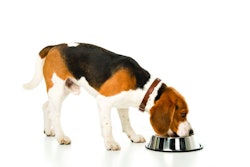
Originally published September 17, 2020
Scientists have many discoveries yet to make about the roles of trillions of microbes dwelling in pets’ bodies. Ongoing research into those communities of bacteria, viruses, fungi and protozoans, known as microbiomes, has uncovered connections between diet and health mediated by microbes. As consumer interest in pets’ gut microbiomes increases, pet food companies can gain insight into their products by monitoring the microbiome in feeding trials, Jessica Jarett, computational biologist for AnimalBiome, said during a roundtable discussion at Petfood Forum CONNECT.
“It can help you to improve the diet formulation to really promote healthier microbiome impacts,” she said. “It can help generate or validate product claims, which consumers do look for and enjoy really. If you have a novel ingredient in your food…testing your microbiome can help facilitate that AAFCO approval for that ingredient.”
When designing those feeding trials, Jarrett offered some advice.
“Our key suggestion for designing your studies is really to consider your goals very carefully,” she said. “This is probably the most important part. Don't try to answer too many questions at one time really, one is more than enough.”
In feeding trials meant to observe a normal dog or cat microbiome, a pet food company needs to know a normal reference point for those animals’ microbial communities, she said. Study designers should also consider how large of an effect on the microbiome that they expect to see. However, if those feeding trials aren’t conducted carefully, they can be a waste of time and money.
“Study design is of paramount importance,” she said. “Oftentimes when companies are trying to save a little bit of money doing a diet trial, they might decide to scrap the control group or reduce the sample size. It can be a little bit more difficult to account for some of the confounding factors. They may not keep track of things like probiotics and medications that the pets are receiving, and make some other poor recruitment choices. All this is really unfortunate because it can result in whole study having inconclusive data. Then none of the questions that you had can be answered with the study that you did. The whole thing becomes kind of a waste of time and money, and we never like to see that.”
Organisms in the pet microbiome
Pets, people and wildlife live in biomes, such as forests and savannahs, or at least cities embedded into and dependent upon those biomes. In turn, animals have microbiomes within them. Our bodies serve as habitats for a diverse range of bacteria, virus, fungi and other microorganisms. Those organisms are known as microbiota. As biomes consist of grass, trees, elephants and lions, the microbiota make up the microbiome. Considered collectively, the microbiota form microbiomes within habitats created by our bodies.
A single planet Earth hosts many biomes, and each animal hosts multiple microbiomes. For example, the gut microbiome has a distinct set of microorganisms from the skin microbiome. (In genomics, the collective genetic material of an animal and the microbes living on it also can be referred to as the microbiome, or metagenome.)
Ecosystems in a biome becomes less resilient when faced with invasive species, habitat destruction, pollution or natural disaster. Similarly, the internal environment can fall out of balance. The causes of problems in the microbiome are just as diverse as the disruptions to ecosystems. However, an individual has far more control over the conditions they create in their own body, or that of their pet, than they do over the what happens to swamps, taigas or deciduous woodlands.
Controlling the conditions of the microbiome involves diet, and as the computer programming saying goes, garbage in, garbage out. Research on pets and people has explored how different edibles influence their bodies’ microbiomes. Prebiotics, probiotics, enzymes and now ever post-biotics have entered pet food formulators tool kits for making foods that encourage healthy communities of microbes within dogs and cats. When that complex microbial community shifts out of balance, the gut can fall into a state called dysbiosis. This unhealthy microbiome correlates with chronic inflammation, digestive problems and other health issues.
















